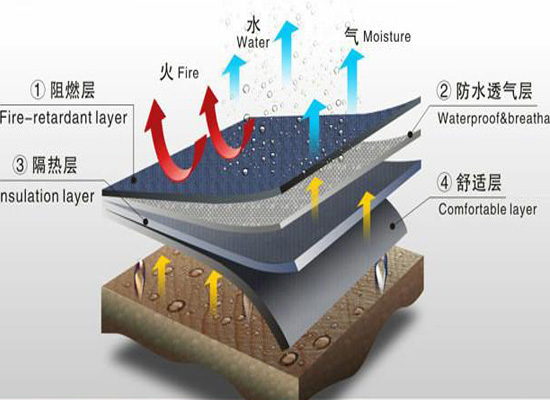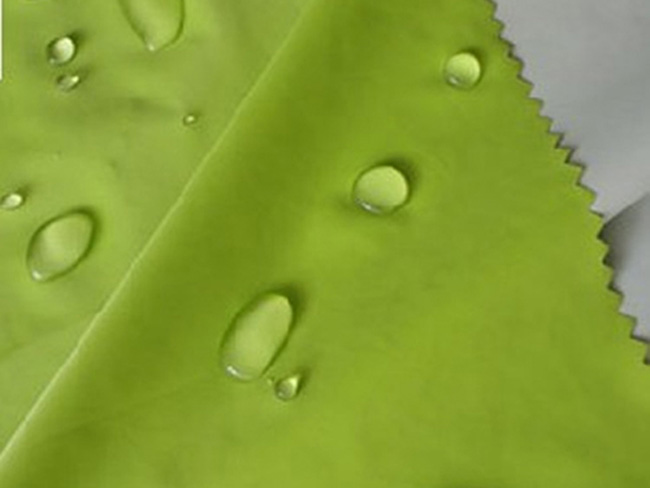Titanium, niobium, tantalum
Titanium is a chemical element with chemical symbol Ti and atomic number 22. It is located in period 4 and group IVB of the periodic table of chemical elements. It is a silver-white transition metal characterized by light weight, high strength, metallic luster, and resistance to moisture chlorine corrosion. However, titanium cannot be used in dry chlorine gas. Even dry chlorine gas with a temperature below 0°C will undergo a violent chemical reaction to generate titanium tetrachloride, which will then decompose into titanium dichloride and even burn. Only when the water content in chlorine gas is higher than 0.5%, titanium can maintain reliable stability in it.

Titanium is considered a rare metal due to its dispersed presence in nature and difficulty in extracting it. But it is relatively abundant, ranking tenth among all elements. Titanium ores mainly include ilmenite and rutile, which are widely distributed in the earth’s crust and lithosphere. Titanium also exists in almost all living things, rocks, water and soil. The extraction of titanium from the main ore requires the Kroll or Hunter processes. The most common compound of titanium is titanium dioxide, which is used to make white pigments. Other compounds include titanium tetrachloride (TiCl4) (used as a catalyst and used to create smoke screens for air cover) and titanium trichloride (TiCl3) (used to catalyze the production of polypropylene).
edit
It took more than a hundred years from the discovery of titanium to the preparation of pure titanium. It was only after the 1940s that titanium was truly utilized and its true nature was recognized.
The ten-kilometer-thick stratum on the earth’s surface contains six thousandths of titanium, which is 61 times more than copper. Its content ranks tenth in the earth’s crust (ranking of elements in the earth’s crust: oxygen, silicon, aluminum, iron, calcium, sodium, Potassium, magnesium, hydrogen, titanium), just grab a handful of soil from the ground, it will contain a few thousandths of titanium. It is not uncommon to find titanium ore with reserves of more than 10 million tons in the world.
There are hundreds of millions of tons of sand and gravel on the earth. Titanium and zirconium, two minerals heavier than sand and gravel, are mixed in the sand and gravel. After millions of years of continuous washing by sea water, the heavier ilmenite is Washed together with zircon sand deposits, layers of titanium ore and zirconium deposits were formed along the long coast. This mineral layer is a kind of black sand, usually several centimeters to tens of centimeters thick. Titanium is not magnetic, and nuclear submarines built with titanium do not have to worry about magnetic mine attacks.
In 1947, people began to smelt titanium in factories. That year, the output was only 2 tons. In 1955, production surged to 20,000 tons. In 1972, the annual output reached 200,000 tons. The yield strength of titanium is higher than that of steel, and its weight is almost half that of steel of the same volume. Although titanium is slightly heavier than aluminum, its yield strength is 2 times greater than that of aluminum. The specific strength of titanium is higher than that of aluminum and steel, and its specific modulus is very close to that of aluminum and steel. In space rockets and missiles, titanium is widely used instead of steel. According to statistics, more than 1,000 tons of titanium are used for space navigation in the world every year. Extremely fine titanium powder is also a good fuel for rockets, so titanium is known as a cosmic metal and a space metal.
Titanium reacts easily with air at high temperatures, but its melting point is as high as 1668°C. At room temperature, titanium is not afraid of corrosion by aqua regia and dilute nitric acid, but it is not resistant to corrosion by more than 5% sulfuric acid and 7% hydrochloric acid. Titanium is not afraid of normal-temperature seawater. Someone once sank a piece of titanium to the bottom of the sea. Five years later, when it was picked up, many small animals and seafloor plants were stuck to it, but it was not rusty at all and was still shiny.
People began to use titanium to make submarines – titanium submarines. Because titanium is very strong and can withstand high pressures, the submarine can sail in seas as deep as 4,500 meters.

edit
Titanium is a chemical element with chemical symbol Ti and atomic number 22. It is a silver-white transition metal characterized by light weight, high strength and metallic properties.;font-size:14px;”>
In 1795, Martin Heinrich Klaproth, a scientist in Berlin, Germany, studied a red ore called Schörl from Hungary. It was a form of rutile (TiO), and Klaproth realized it was an oxide of a previously unknown element, which he named titanium. When he was informed of Gregor’s discovery, he studied ilmenite sand and confirmed that it also contained titanium.
It was not until 1910 that M. A. Hunter, working at General Electric in the United States, produced pure titanium metal by heating titanium tetrachloride and sodium metal.
5 physical properties
edit
Titanium is an important alloying element in steel and alloys. The density of titanium is 4.506-4.516 g/cubic centimeter (20°C), which is higher than aluminum and lower than iron, copper, and nickel. But its specific strength ranks first among metals. The melting point is 1668±4°C, the latent heat of fusion is 3.7-5.0 kcal/g atom, the boiling point is 3260±20°C, the latent heat of vaporization is 102.5-112.5 kcal/g atom, the critical temperature is 4350°C, and the critical pressure is 1130 atmospheres. The thermal conductivity and electrical conductivity of titanium are poor, similar to or slightly lower than stainless steel. Titanium has superconductivity, and the superconducting critical temperature of pure titanium is 0.38-0.4K. At 25°C, the heat capacity of titanium is 0.126 cal/gram atom·degree, the thermal enthalpy is 1149 cal/gram atom·degree, and the entropy is 7.33 cal/gram atom·degree. Titanium metal is a paramagnetic material with a magnetic permeability of 1.00004.
Titanium has plasticity. The elongation of high-purity titanium can reach 50-60%, and the shrinkage of section can reach 70-80%. However, the shrinkage strength (that is, the force generated when shrinking) is low, and it is not suitable for use as structural materials. The presence of impurities in titanium has a great impact on its mechanical properties. In particular, interstitial impurities (oxygen, nitrogen, carbon) can greatly increase the strength of titanium and significantly reduce its plasticity. The good mechanical properties of titanium as a structural material are achieved by strictly controlling the appropriate impurity content and adding alloy elements.





